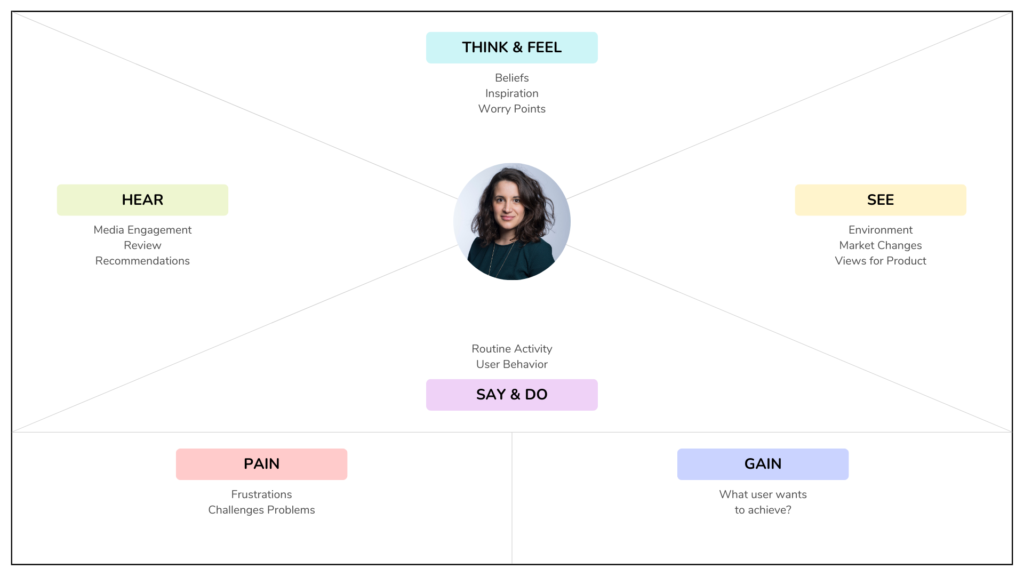In the ever-evolving landscape of business, especially post-pandemic marketing strategies play a pivotal role in the success of a venture, especially for small-scale businesses striving to make their mark. During pandemic a lot of businesses tends to lean towards digital marketing. Now post-pandemic there are two popular approaches that have gained prominence are Go-to-Market (GTM) and Empathy Mapping. In this article, we will delve into the intricacies of these strategies, comparing their strengths and weaknesses to help small businesses decide which approach aligns better with their objectives.
Understanding Go-to-Market (GTM)
Go-to-Market (GTM) is a holistic business strategy that encompasses the entire process from product development to customer acquisition. It involves defining the target market, crafting a compelling value proposition, and implementing a plan to reach customers effectively. GTM strategies are focused on bringing a product or service to market efficiently and maximizing its potential.
Advantages of GTM:
Efficient Market Entry:
- GTM strategies are designed to streamline the product or service launch process, ensuring a swift and efficient entry into the market.
- Quick market penetration can be crucial for small businesses looking to gain a competitive edge.
Clear Business Roadmap:
- GTM provides a structured roadmap, helping businesses align their resources and efforts toward achieving specific business goals.
- This clarity can be particularly beneficial for small businesses with limited resources.
Scalability:
- GTM strategies are often scalable, allowing businesses to adapt and expand their market presence as they grow.
- Small businesses can benefit from the flexibility to scale operations according to their evolving needs.

Understanding Empathy Mapping

Empathy Mapping is a customer-centric approach that involves understanding the emotions, needs, and behaviors of the target audience. It goes beyond demographic data to create detailed personas that help businesses develop a deeper understanding of their customers, leading to more personalized and resonant marketing strategies.
Advantages of Empathy Mapping:
Customer-Centric Approach:
- Empathy Mapping places the customer at the center of the marketing strategy, emphasizing the importance of understanding their motivations and pain points.
- Small businesses can build stronger connections with their audience by tailoring their messaging to address specific customer needs.
Personalized Communication:
- By creating detailed customer personas, businesses can craft highly personalized marketing messages that resonate with their audience.
- Personalization can enhance customer engagement and loyalty, crucial factors for the success of small businesses.
Enhanced Customer Retention:
- Understanding customer emotions and preferences enables businesses to build long-lasting relationships, leading to improved customer retention.
- Small businesses can benefit from a loyal customer base that contributes to sustainable growth.
Choosing the Right Approach for Small Scale Businesses:
While both GTM and Empathy Mapping offer valuable insights, the choice between the two depends on the nature of the business and its specific goals.
For Rapid Market Entry and Growth:
- If the primary goal is to enter the market swiftly and achieve rapid growth, a GTM strategy may be more suitable for a small-scale business.
For Building Strong Customer Relationships:
- If the focus is on building strong customer relationships, understanding customer emotions, and delivering personalized experiences, Empathy Mapping may be the preferred approach.
Integrated Approach:
- In some cases, a combination of both GTM and Empathy Mapping can be advantageous. Businesses can leverage GTM for efficient market entry and use Empathy Mapping to refine their marketing messages and enhance customer relationships.
Choosing the Right Approach for Small Scale Businesses
While both GTM and Empathy Mapping offer valuable insights, the choice between the two depends on the nature of the business and its specific goals.
For Rapid Market Entry and Growth:
- If the primary goal is to enter the market swiftly and achieve rapid growth, a GTM strategy may be more suitable for a small-scale business.
For Building Strong Customer Relationships:
- If the focus is on building strong customer relationships, understanding customer emotions, and delivering personalized experiences, Empathy Mapping may be the preferred approach.
Integrated Approach:
- In some cases, a combination of both GTM and Empathy Mapping can be advantageous. Businesses can leverage GTM for efficient market entry and use Empathy Mapping to refine their marketing messages and enhance customer relationships.
In the dynamic world of marketing, there is no one-size-fits-all approach. Small-scale businesses need to carefully evaluate their goals, resources, and target audience to determine whether a Go-to-Market strategy, an Empathy Mapping approach, or a blend of both aligns best with their unique circumstances. Ultimately, success lies in a comprehensive understanding of the market and the ability to adapt strategies to meet the evolving needs of both the business and its customers.
